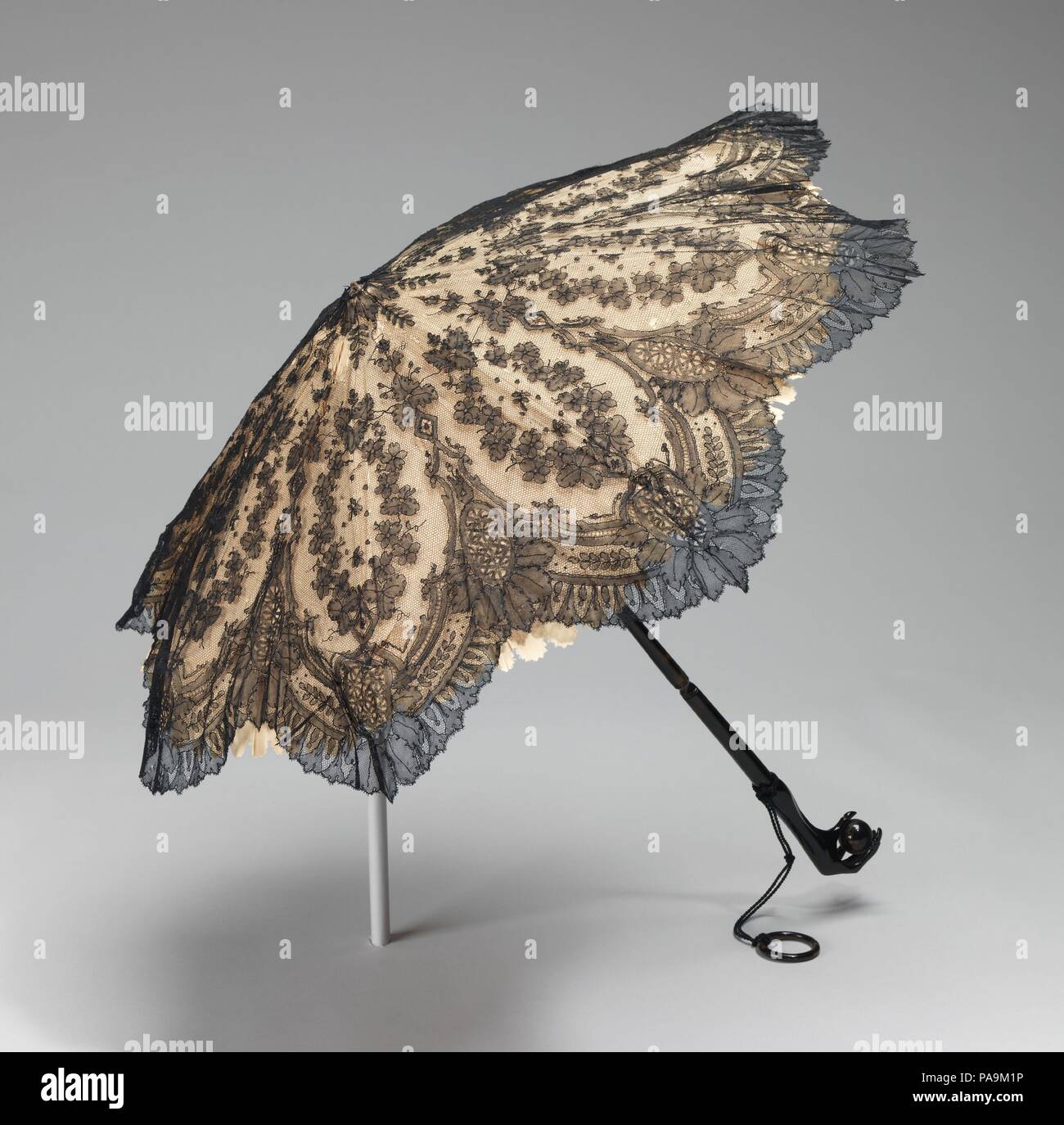Parasol. Culture: American. Manufacturer: Fortis. Date: 1860-65. Carriage parasols were popularized by Queen Victoria in the 1840s and continued to be popular through the nineteenth century. They were distinguished for their size and carried as decorative accessories which served some function of shading the face from the sun, as close-fitting fashionable hats at that time did not. The claw and ball motif found on the handle was also a popular motif in furniture legs of the Queen Anne and Chippendale styles. It is a representation of a bird's claw grasping a ball and is thought to be deriv

Image details
Contributor:
Album / Alamy Stock PhotoImage ID:
PA9M1PFile size:
49.9 MB (1.8 MB Compressed download)Releases:
Model - no | Property - noDo I need a release?Dimensions:
4200 x 4150 px | 35.6 x 35.1 cm | 14 x 13.8 inches | 300dpiPhotographer:
AlbumMore information:
This image could have imperfections as it’s either historical or reportage.
Parasol. Culture: American. Manufacturer: Fortis. Date: 1860-65. Carriage parasols were popularized by Queen Victoria in the 1840s and continued to be popular through the nineteenth century. They were distinguished for their size and carried as decorative accessories which served some function of shading the face from the sun, as close-fitting fashionable hats at that time did not. The claw and ball motif found on the handle was also a popular motif in furniture legs of the Queen Anne and Chippendale styles. It is a representation of a bird's claw grasping a ball and is thought to be derived from the Chinese dragon's claw holding a crystal ball or jewel. Museum: Metropolitan Museum of Art, New York, USA.